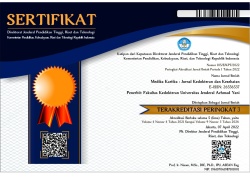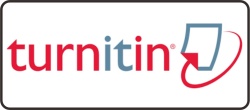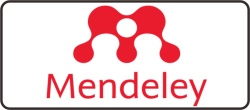ANALISIS HISTOPATOLOGI KETEBALAN EPIDERMIS SETELAH PENGOLESAN GEL EKSTRAK CURCUMIN PADA MENCIT ALBINO YANG DIINDUKSI 2,4 DINITROCHLOROBENZE
Abstract
Agen antiinflamasi topikal dari bahan alami dengan efikasi yang baik dan efek samping minimal sangat diperlukan. Curcumin termasuk bahan alami yang berefek anti inflamasi. Namun penelitian dalam bentuk topikal masih sangat jarang. Penelitian ini bertujuan untuk menilai efek topikal gel ekstrak Curcumin terhadap inflamasi kulit mencit yang diinduksi 2,4 dinitrochlorobenzen (DNCB). Studi menggunakan randomized posttest –only control group design dengan sampel 30 ekor mencit albino dalam 6 kelompok. Ketebalan epidermis diukur dari lapisan sel basal hingga stratum korneum menggunakan ImageJ software. Tidak terdapat perbedaan signifikan rerata ketebalan epidermis antara kelompok mencit yang diberikan aplikasi gel ekstrak Curcumin dengan kelompok yang tidak diberikan gel ekstrak Curcumin. Penebalan epidermis terjadi jika dermatitis kontak iritan berupa dermatitis kontak iritan kronis. Diperlukan penelitian lebih lanjut untuk menilai efek anti inflamasi ini pada inflamasi kronik.
Kata kunci: curcumin, DNCB, gel, stratum korneum
DOI : 10.35990/mk.v7n0.p60-69
References
2. Wufuer, M, Lee, G, Hur W, Jeon, B, Kim, BJ, Choi, T.H, Lee, S. Skin-on-a-chip model simulating inflammation,edema and drug-based treatment. Scientific reports. 2016; 6,37471
3. Guo H, Callaway JB, Ting J. Inflammasomes: mechanism of action, Role in Desease and theurapeutics. Nat Med. 2016; July; 21(7): 677-687
4. Pasparakis, M, et al., Mechanisms regulating skin immunity and inflammation. 2014; 14(5): 289.
5. Paramita, S, Kosala, K, Dzulkifli, D, Saputra, DI, Wijayanti, E. Anti-inflammatory activities of ethnomedicinal plants from Dayak Abai in North Kalimantan, Indonesia. Biodiversitas Journal of Biological Diversity. 2017; 18, 1556-1561
6. Abbas, AK, Litchman, AH, Pillai, S. Cellular and molecular immunology 8th ed. Philadelpia:Elsevier Health Sciences. 2015: 40-45
7. Chen CC, Liu X, Li Y, Liang H, Li K, Li J, Cheng C, Liu X, Zhong S, Li L, Wang Y. Effect of Acupunture on 1-Chloro-2,4-dinitrochlorobenzene-induced Allergic Contact Dermatitis in Mice.J. Acupunct Meridian Stud. 2017; 10(4):252-260
8. Heo JH, Heo Y, Lee HJ, Kim M, Shin HY. Topical anti-inflammatory and anti-oxidative effect of porcin placenta extract on 2,,4-dinitrochlorobenze-induced contact dermatitis. BMC Complementary and Alternative Medicine. 2018; 18: 331
9. Fadus M, lau C, Bichandani J, Lynch H. Curcumin: An age-old anti inflammatory and anti-neoplastic agent. Journal of Traditional and Complementary Medicine. 2017; 7-339-346
10. Kocaadam B, Sanlier N. Curcumin,an Active Component of Turmeric (Curcuma Longa), and Its Effects on Health. Critical Reviews in Food Science and Nutrition. 2017; 57 (13): 2889-2895
11. Agrawal R, sandhu SK, Sharma I, Kaur IP. Development and Evaluation of Curcumin-Loaded Elastic Vesicle as an Effective Topical anti-inflammatory Formulation. AAPS PharmSciTech. 2014
12. Kunnumakkar AB, Bordoloi D, Padmavathi G, Monisha J. Curcumin, the golden nutraceutical:multitargeting for multiple chornic deseases. British Journal of Pharmacology. 2017; 174:1325-1348
13. Shotriya S, Ranpise N, Satpute P, Vidhate B. Skin Targetting of Curcumin Solid Lipid nanoparticles-engrossed Topical Gel for The Treatment of Pigmentation and Irritant Contact Dermatitis. Artificial, Cells, nanomedicine and Biotechnology. 2018; 46(7): 1471-1482
14. Heng MCY. Topical Curcumin: A Review of Mechanisms and uses in Dematology. Int J.Dermatol Clin Res. 2017; 3 (1): 010-017
15. Spriggs S, Sheffield D, Olayanju A, Kitteringham NR, Naisbitt DJ, Aleksic M. Effect of repeated daily dosing with 2,4-DinitroChlorobenzene on Glutathione Bioynthesis and Nrf activation in reconstructed human epidermis. Toxicological sciences. 2017; 154(1); 5 – 15
16. Nedorost, ST. Iritant Dermatitis. In: Kang S, Amagai M, Bruckner AL, Enk AH, Morgolis DJ, McMichael AJ, et al., editors. Fitzpatrick's Dermatology 9th Ed: McGraw-Hill Education; 2019. p. 418
17. Panahi Y, Fazlolahzadeh O, Atkin S.L. Majeed M., Butler A.E, Johnson T.P, Sahebkar A. Evidence of curcumin and curcumin analogue effects in skindiseases: A narrative review. J.Cell Physiol. 2018; 1 – 14
18. Mohanty, C, & Sahoo, SK. Curcumin and its topical formulations for wound healing applications. Drug Discovery Today. 2017; 22(10), 1582–1592.
19. He Y, Yue Y, Zheng X, Zhang K, Chen S, Du Z. Curcumin, Inflammation, and Chronic Disease: How are They Linked?Molecules. 2015; 20: 9183-9213
20. Kulac, M, Aktas, C, Tulubas, F, Uygur, R., Kanter, M., Erboga, M, Ozen, OA. The effects of topical treatment with curcumin on burn wound healing in rats. Journal of Molecular Histology. 2013; 44(1), 83–90.
21. Hew, J, Solon-Biet SM, McMahon, AC, Ruohenen K, Raubenheimer D, Ballard JW, Le Couter DG, Nicholis C, Li Z, Maitz PK, Wang Y, Simpson S. The effcets of dietaray macronutrient balance on skin structure in afing male and female mice. PloS ONE. 2016; 11(11): e0166175.



























